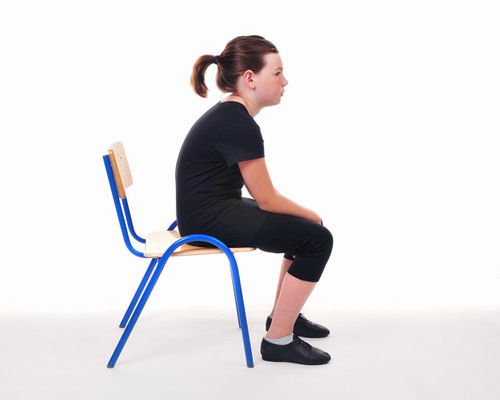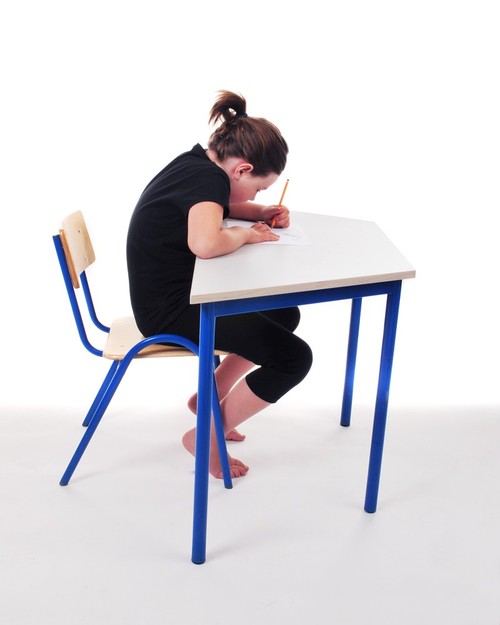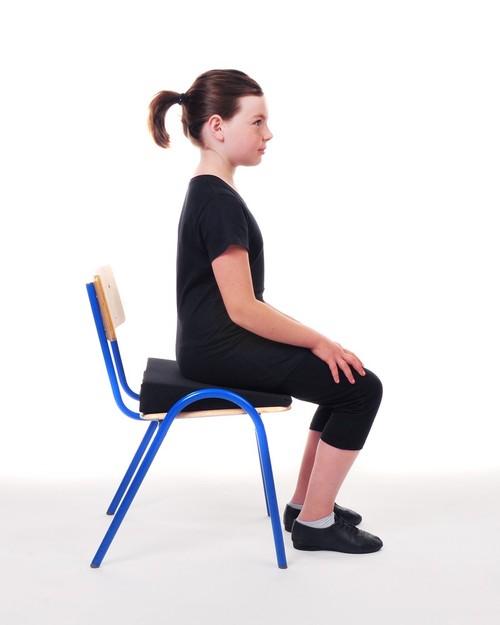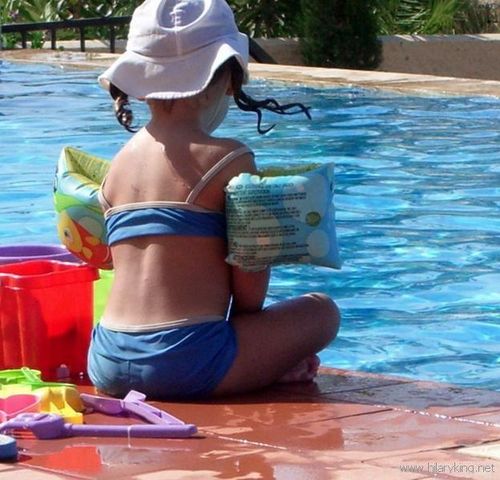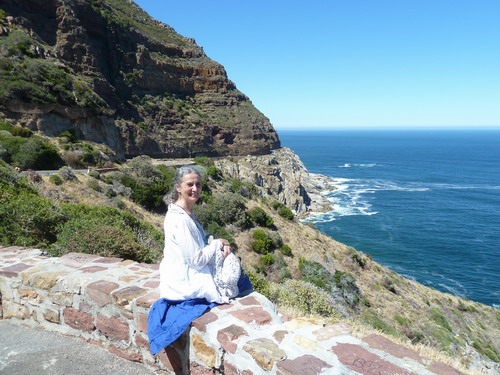An Unexpected Lesson in Inhibition & End-gaining
Successful Alexander Technique Fundraising Workshop
Women’s Alexander Technique Workshop raises £265 in Aid of Mary on the Green charity
I am pleased to say that the Women’s Workshop that I held on March 10th in the Newington Green Unitarian Church raised £225 for Newington Green Action Group’s Mary on the Green campaign. When Gift Aid has been added to these donations, we will have made something like £265! This is the second successful workshop that I have run to raise money for this project.
This money will go towards erecting a memorial to Mary Wollstonecraft, the pioneering feminist who was associated with Newington Green in the 1790s.
Many thanks to Rev, Andy Pakula for allowing us to use the Upper Schoolroom at the Church for the workshop.
Thanks also to Susan Brennan for assisting me at the Workshop, helping to make it a successful and enjoyable morning’s teaching.
UPDATE
A Sculpture for Mary Wollstonecraft was erected on Newington Green N16, in November 2020. The sculptor was the world famous artist Maggie Hambling.
https://en.wikipedia.org/wiki/A_Sculpture_for_Mary_Wollstonecraft
How do You Choose a Computer from an Alexander Perspective?
An Alexander Technique Perspective on How to Choose a Computer
Regaining Control of the Voice
Nikolaas Tinbergen, Nobel Laureate on FM Alexander’s Work
The poise of a 3 year old
The small child in this photo is alert and poised, with her back freely lengthening, quite naturally. Her head is balanced on her neck in such a way that all her muscles are able to work freely and in co-ordination, so that the heavy weight of her head is transferred evenly right through her body, onto her sitting bones.
If the child is able to maintain this free and easy poise as she grows up, she will be fortunate. Most of us started out life with a similar, natural but unconscious, postural alignment but most of us lose it over time. Many people start Alexander lessons in order to improve their posture and reduce back pain.
In Alexander Technique lessons we can begin to reclaim this birthright, by learning to maintain our poise and increase our freedom of movement, through making conscious choices about the way we use ourselves during all our activities. Sometimes, we even feel younger again.
Poise – Why do we lose it?
Poise and Posture
When we are children, most people have a beautiful easy poise, as is illustrated in this photo of a little girl sitting on a giant snow seat on Newington Green. Despite the obvious cold, the child is sitting easily and in a relaxed manner, whilst many adults would be bent over and tensed up against the cold!
There are many influences in our lives that get us interfering with our natural poise. Our attitudes and emotional experiences are reflected in the way we use our bodies and our minds gradually tend to become rather set so that our view of the world – and our physical responses to it – become rather fixed and habitual. Stress, peer group pressures, accidents and illnesses all play their part in moulding our habitual body use and many of us end up crumpling our bodies down into ourselves – whilst others over-extend and arch their backs in an attempt to ‘stand up straight’ – both of which pull us off our balance and poise.
Fortunately, F M Alexander realised that we are able to reduce some of these effects if we are willing to let go of habits of thought and behaviour that interfere with our natural use. During Alexander Technique lessons, we can learn how to do this and in so doing, regain much of the fluid, free and poised way of being and moving that we had as children and feeling more comfortable in ourselves.
Shivery Weather

The Alexander Technique challenges our habits
Have you made some New Year Resolutions?
Is the Alexander Technique about posture?
The Alexander Technique’s about posture isn’t it?
Well, not really!
It’s true that changes in posture do come about as a result of using the Technique and this photo of fellow Alexander teacher Refia Sacks, out and about in South Africa, illustrates that a nice easy poise is one of the benefits of learning to use use our bodies more freely and effectively in our everyday activities. However, the aim of Alexander Technique lessons is not about improving posture.
Refia Sacks – sitting with casual poise
In AT lessons, we learn how to move around and use our bodies in a coordinated way without tension and it is the quality of our body-use that is all important. As we allow our bodies to work the way they are designed to, our posture does tend to improve. But that is an outcome, not the aim.
Some people manage to retain their good body use into adulthood, without ever having an Alexander Technique lesson. However, most adults lose the free and often graceful movements that we had as children and often end up rather ‘crumpled’, with a variety of aches and pains. One of the joys of having Alexander lessons is that we can often regain – or find – some of the co-ordination and freedom of movement that is more natural to our bodies.
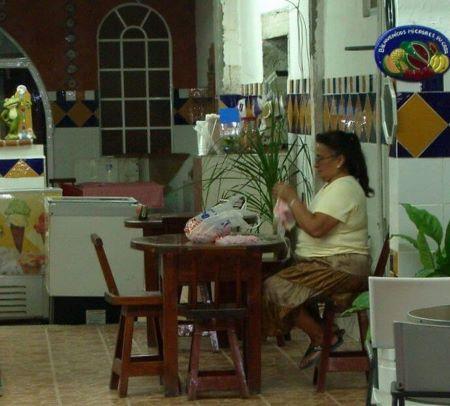
Natural, easy poise whilst working
I watched this woman in Mexico as she sat quietly working away at her knitting and she demonstrates that adults can indeed sit and work in a relaxed manner, with a lengthened spine and good posture. As she sits in the café, she has a lovely strong back and quiet poise, which allows her arms to move freely as she concentrates and works on her task. Too many people drop their neck and head forwards to do knitting, computing and similar tasks, The result is that they get neck and back pain from their mis-use and from the weight of the head dragging down towards their hands. Such poor posture and body-use can contribute to developing RSI, particularly if there is lots of habitual muscle tension.
I doubt this woman has had AT lessons and there is no knowing how much attention she has paid to thinking about how she uses her body. This woman appears to be comfortable in her body. How many people do you see sitting at desks, pianos and computers, who have a similar free and easy poise and balance in their body as they work?
If you want to re-find your natural poise and freedom of movement and would like to prevent having pain whilst you work, come and try some 1:1 Alexander Technique lessons.
